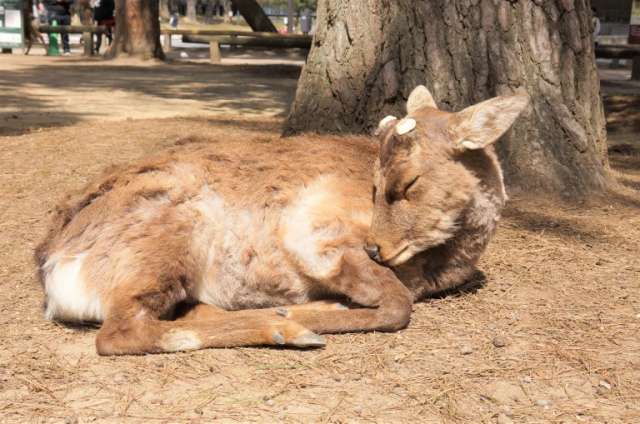
Shape and hardness of animals’ droppings has changed noticeably since a few months ago.
The city of Nara’s most popular tourist attraction is Nara Park, but not necessarily because of the foliage or landscaping. No, what really brings the crowds is the herds of wild yet tame deer that roam free throughout the grounds.
Of course, deer that roam free also poop freely, so a walk around the park offers ample opportunities to see not only the creatures themselves, but also their droppings, and recently there’s been a noticeable change in the quality of the latter.
Ordinarily the pellets from the Nara park deer are on the squishy side. However, in recent weeks local observers have noticed that their animal friends’ poop has become firmer and more consistent in shape, likening its appearance to kuromame, or black soybeans.
▼ Kuromame
The change in the deer’s digestive tract output stems from a change in input, it seems. Throughout the park, vendors sell shika senbei, special rice crackers for visitors to feed to the deer. Though nutritious, the crackers are made from flour and rice bran, which differ from the deer’s natural-environment foods of grasses and nuts. According to Yoshitaka Ashimura, executive director of the Nara Deer Preservation Foundation, eating too large a quantity of the crackers can leave deer feeling especially thirsty, thus causing them to drink more water than they usually would and resulting in diarrhea-like symptoms.
▼ Deer crackers
However, with the coronavirus pandemic severely impacting travel in 2020, Nara Park is receiving far fewer visitors than normal, which in turn means fewer deer crackers being purchased and thus fewer crackers fed to the deer. The drop in visitors has been extra pronounced since Nara Park is particularly popular with foreign visitors, and especially tour groups from China, one of the first countries to experience the effects of the coronavirus pandemic and have its outbound international pleasure travel come to a near-complete stop.
But if Nara’s deer are eating so fewer crackers that it’s affecting their poop, are they still getting enough to eat? The Nara Deer Preservation Foundation believes they are, with Ashimura stressing that the crackers are really like supplementary snacks to the animals, and that they can subsist just fine on naturally growing food sources in the park. “As with anything, balance is important” says Ashimura in discussing the deer’s diet. If anything, the return to a greater proportion of natural fare seems to be a good thing for them, and between this and the giant sea bug in Mie Prefecture that took a dump for the first time in years last month, it’s heartening to know that when we need some good news in these troubled times, we can look to the poop of the animals of Japan.
Source: Asahi Shimbun via Livedoor News via Jin
Top image ©SoraNews24
Insert images: Wikipedia/Indiana jo, SoraNews24
● Want to hear about SoraNews24’s latest articles as soon as they’re published? Follow us on Facebook and Twitter!
Follow Casey on Twitter, where he promises not to tell you what kind of food his poo currently resembles.